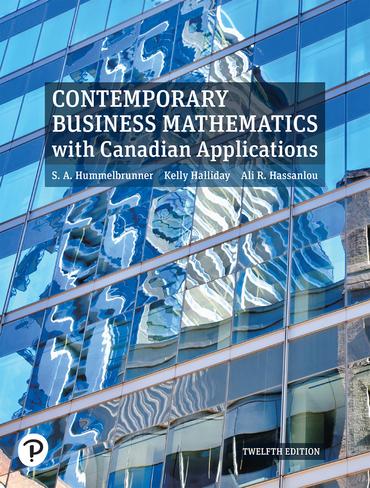Question
It seems these days that college graduates who are employed full-time work more than40-hour weeks. Data are available that can help us decide if this
It seems these days that college graduates who are employed full-time work more than40-hour weeks. Data are available that can help us decide if this is true. A survey was recently sent to a group of adults selected at random. There were18respondents who were college graduates employed full-time. The mean number of hours worked per week by these18 respondents was42hours, with a standard deviation of9hours.
Assume that the population of hours worked per week by college graduates employed full-time is normally distributed with mean. Can we conclude that is greater than40 hours? Use the0.05 level of significance. Perform a one-tailed test. Then fill in the table below.
Carry your intermediate computations to at least three decimal places and round your answers as specified in the table. (If necessary, consult alist of formulas.)
The null hypothesis: H0:
The alternative hypothesis :H1:
The type of test statistic:(Choose one) Z, t, Chi square, F
The value of the test statistic:
(Round to at least three decimal places.)
Thep-value:
(Round to at least three decimal places.)
Can we conclude, at the 0.05 level of significance, that the mean number of hours worked per week by college graduates is greater than40
hours?
Step by Step Solution
There are 3 Steps involved in it
Step: 1

Get Instant Access to Expert-Tailored Solutions
See step-by-step solutions with expert insights and AI powered tools for academic success
Step: 2

Step: 3

Ace Your Homework with AI
Get the answers you need in no time with our AI-driven, step-by-step assistance
Get Started


